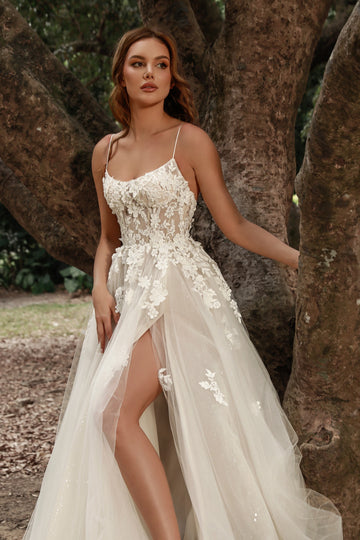Understanding the Texture of Different Fabrics: A Comprehensive Guide
Understanding the Texture of Different Fabrics: A Comprehensive Guide
Fabrics are an essential part of our daily life, influencing everything from fashion choices to home decor. But when it comes to understanding the texture of different fabrics, many people find themselves lost in a maze of terms and characteristics. In this article, we will dive deep into the world of fabrics, describing their textures, properties, and uses. This comprehensive guide aims to enhance your understanding of fabric textures so that you can make informed choices whether you are a designer, fashion enthusiast, or simply looking to improve your wardrobe.
What is Fabric Texture?
Fabric texture refers to the surface quality of a textile, which can be felt through touch and seen visually. It contributes significantly to the overall appearance and functionality of a fabric. Textiles can range from smooth and silky to rough and coarse, and understanding these differences is crucial for a variety of uses.
Categories of Fabric Textures
Fabrics can be broadly categorized into various textures. Here are some categories that you may find useful:
| Texture Category | Description | Examples |
| Smooth | Fabrics that feel soft and have an even surface. | Satin, Silk |
| Rough | Fabrics that feel uneven and have a coarse surface. | Canvas, Tweed |
| Textured | Fabrics that have a distinct pattern or surface irregularity. | Velvet, Corduroy |
| Knitted | Fabrics made from interlocking loops, giving them stretchiness. | Jersey, Rib knit |
| Woven | Fabrics made from interlacing two sets of yarns. | Denim, Percale |
Importance of Understanding Fabric Texture
Understanding the texture of different fabrics is vital for various reasons:
- Fashion Choices: The texture of a fabric can influence your styling options. For example, textured fabrics might be more suited for cooler weather whereas smooth fabrics can give a sleek look for formal occasions.
- Comfort: The feel of the fabric against your skin is essential. Fabrics like cotton and silk often offer more comfort compared to polyester blends.
- Durability: Different textures and weaves indicate the strength and durability of the fabric. You wouldn't want a delicate fabric for heavy-duty use.
- Care Instructions: Some textures may require specific washing or care instructions, making it important to know what you are working with.
Common Fabric Types and Their Textures
Now that we understand the importance of fabric texture, let's explore some common fabric types along with their distinct textures:
Cotton
Cotton is one of the most versatile fabrics available. It has a smooth texture, but also comes in variations like muslin (light and airy) and denim (more rugged). Whether in casual wear or formal attire, cotton's breathability makes it a favorite.
Silk
Silk is known for its luxurious, smooth texture. It has a natural sheen and feels cool against the skin. It's often used in evening wear and accessories due to its elegant appearance.
Wool
Wool has a unique, rough texture that varies depending on the type (such as Merino or Shetland). It is highly durable and offers excellent insulation, making it a popular choice for winter clothing.
Polyester
Polyester is synthetic and typically smooth in texture. However, depending on how it is woven or treated, polyester can mimic the feel of silk, cotton, or even wool. It's easy to care for and retains its shape well.
Linen
Linen has a crisp, slightly rough texture. It’s breathable and absorbs moisture well, making it ideal for hot weather. Its natural wrinkled look adds a casual charm.
How to Choose the Right Fabric Texture for Your Needs
Choosing the right fabric texture depends on several factors, including:
- Usage: Consider where and how you will use the fabric. For instance, if you are making a summer dress, a lightweight and breathable fabric like cotton or linen would be a great choice.
- Comfort: Always prioritize comfort, especially for clothing that will be worn for extended periods.
- Care: Be aware of the care instructions associated with each fabric type. Some fabrics, like silk, may require dry cleaning, whereas others can be machine washed.
- Style: Align your fabric choices with the style of your garment. Textured fabrics are excellent for casual wear while smooth fabrics have a more formal appeal.
Common Misconceptions About Fabric Textures
As with any subject, misconceptions abound. Here are some common misunderstandings about fabric textures:
- Texture does not affect quality: On the contrary, the texture can significantly impact the perceived quality and durability of a fabric.
- All smooth fabrics are fragile: While many smooth fabrics like silk are delicate, durable options can also be smooth, such as high-quality polyester blends.
- Textured fabrics are only for winter: Textured fabrics can be worn year-round. For instance, light-weight knitted fabrics are excellent for summer, while heavier options work for cooler months.

Conclusion: Embracing the World of Fabrics
Understanding the texture of different fabrics is more than just a superficial endeavor; it is vital for the creation of comfortable, stylish, and functional clothing and home goods. By familiarizing yourself with the textures, types, and characteristics of fabrics, you can make informed decisions that reflect your style, comfort, and practicality.
In summary, always consider the end-use of the fabric, the comfort it offers, and the care instructions. As you continue on your journey in the world of textiles, embrace the plethora of textures available to you, and don’t be afraid to mix and match for optimal effect.
Whether you are a novice or a seasoned professional, understanding fabric textures elevates your choices and can transform your wardrobe and home. Remember to keep experimenting with different textures to discover what works best for you!
